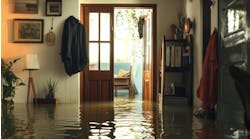Latest from Best Practices
Show Customers All the Ways They Can Buy
Sponsored
As a selling technician you ask questions to help your customer understand how you can help them. Imagine when you ask your customer, “Who in your home suffers from asthma, allergies, hay fever, sinus conditions or any kind of respiratory condition?” and they tell you all about their son Andrew who has allergy-induced asthma, takes prescription medicine and even uses an emergency inhaler on occasion. You ask her, “If I could help Andrew breathe better, would you want me to?” She says yes.
When you are at the furnace you pull the filter out. It’s one of the cheap fiberglass filters that cost less than a buck, and isn’t worth what it cost. You say, “I bet you could read a newspaper through this filter. If I went to your kitchen, got your salt shaker and poured some salt on this filter, do you suppose some of that salt would go through this filter? Right, I bet it would. So, is the dust in your home larger or smaller than a grain of salt? With that in mind, this isn’t going to take much of that dust out of the air, is it?
“Have you ever been in your kitchen in the morning when the sun is shining in at an angle? And, have you ever seen dust floating around on that ray of sunlight? That dust you can see with the naked eye floating around on that ray of sunlight is probably all over your house. Your first instinct is to get to another room where you can’t see the dust but the reality is that it is there, too. Without proper filtration the dust in our homes just goes around and around through the system and throughout the house. The stuff you can see with the naked eye is also what you see on your TV and what lands on your furniture, so we have to dust it off. The dust you can see is carpet fiber, clothing fiber, dust we bring in from outside, pet dander and some say that most of the stuff floating around in our homes is our own skin. Kinda gross, isn’t it?
“Let me explain how filters work. They are rated on a number scale from 1 to 16 and beyond 16 you get hospital quality air filtration. These old fiberglass filters are on the bottom of the scale, say 1 to 3 somewhere. They don’t take much of the dust out of your home. Those white wavy filters you’ve seen at the hardware store can range from, say, a 5 all the way up to 16. The sweet spot or the number we need to focus on is the number 10 filter. The number 10 filter will take out all the stuff you can see with the naked eye. All that stuff that is floating around your home, clogging up your furnace and the indoor part of your air conditioner. Can you see how a number 10 filter could help Andrew breathe better?
“The number 16 filter not only takes out all the stuff you can see with the naked eye but it takes out a whole lot more. It takes out odors from cooking, nicotine, hairspray, bug spray and more. Have you ever been cleaning your shower and had to stick your head out over and over again just to get a breath of fresh air? The stuff we use to clean our houses can be toxic. When you finally get done cleaning the shower, you get away from the shower as fast as possible. Do the bad fumes from the cleaning chemicals magically go down the drain? Or, do they follow you out into your home? Right, and they stay in the air going around and around and around. That can’t be good for Andrew to breathe either. The number 16 filter will start taking that kind of stuff out too. Beyond that you could have hospital quality air in your home if you want it. We could give you pure air taking out over 99 percent of all the stuff that is in your home’s air.
“As you can see there are lots of filters. Some of the ones you can get from the hardware store that are one inch wide like yours take out so much dust, but because they have less surface area, they fill up fast and have to be changed often leading to high cost and lots of time dealing with it. We now have filters that will clean the air in your home and last, in some cases, up to a full year.
“So, now that you know all about filters and how they work, which number filter do you think would be best for Andrew?”
While every company likes to have their salespeople in the home to close sales, having technicians who are educated and confident in the sales process can drive timely, on-the-spot sales that would simply be lost otherwise. To download a free training package on tech selling and communications, complete with an online class, step-by-step guides and presentations, industry research and many other valuable resources, visit EGIA.org/CBS-Techselling.
Mike Treas brings experience in the contracting industry as a sales manager and comfort advisor for one of the largest and most well-respected residential heating and air conditioning contractors in the United States. He has personally worked with hundreds of contracting companies across North America conducting training and consulting in the areas of sales, sales management, business management, customer service and technician lead generation training. His background consists of 35 years in sales and sales management bringing expertise, knowledge, techniques and strategies proven in the contracting industry to increase sales. He is an EGIA Contractor University faculty member.


